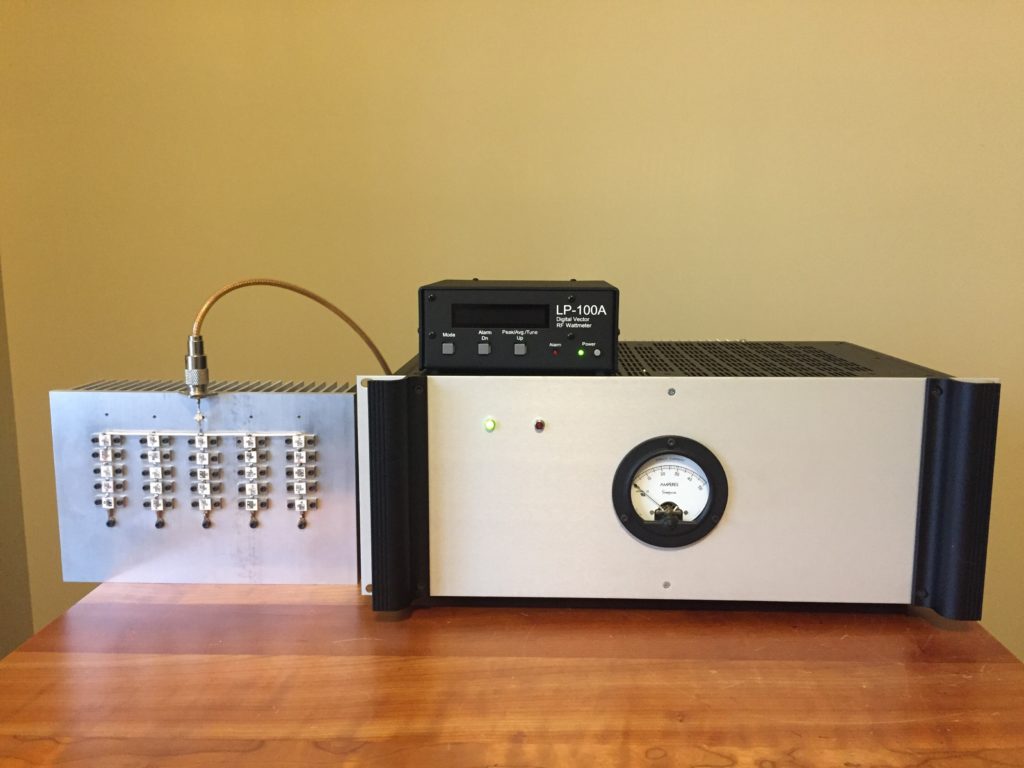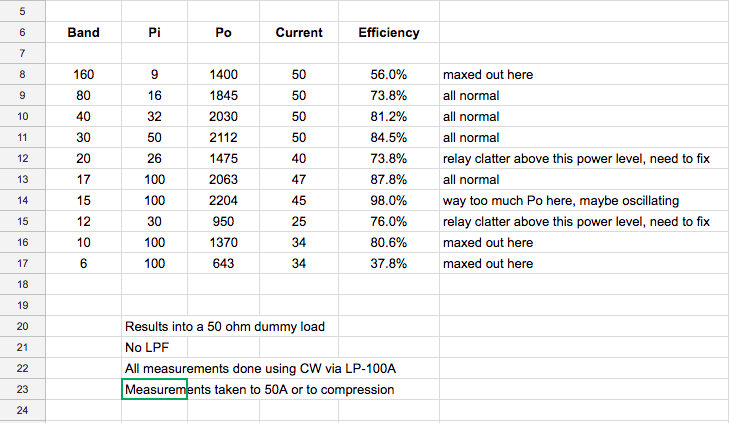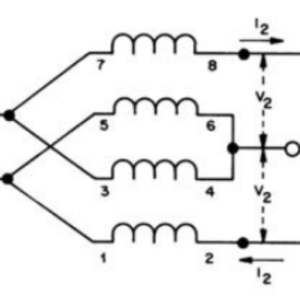The other day, a fellow amp building buddy asked me what I was seeing for performance on my double MRFX1K80H LDMOS Amp.
I pulled out the ole dummy load and set up this quick test bench.

On the left you can see the home made ~4kW dummy load. Amp in the middle and LP-100A on top, set in Tune Mode.
Ran through the bands and tested to either 50A (just below what the power supply will do) OR compression. Obtained the results below.
This is pretty typical where you have lower performance at the extremes. These are standard broadband trade-offs when you are trying to cover 1-50Mhz with the same output TLTs.
I have a little relay clatter on a couple of bands, which means my relay delay circuit is taking on RF on those bands, above the indicated power. This only happens on a continuous wave and never shows up on SSB regardless of power level. It’s an easy fix requiring a simple capacitor to ground somewhere. I’ll get around to it eventually.
Otherwise, got to LOVE the performance of these amplifiers!
Rob





Leave a Reply